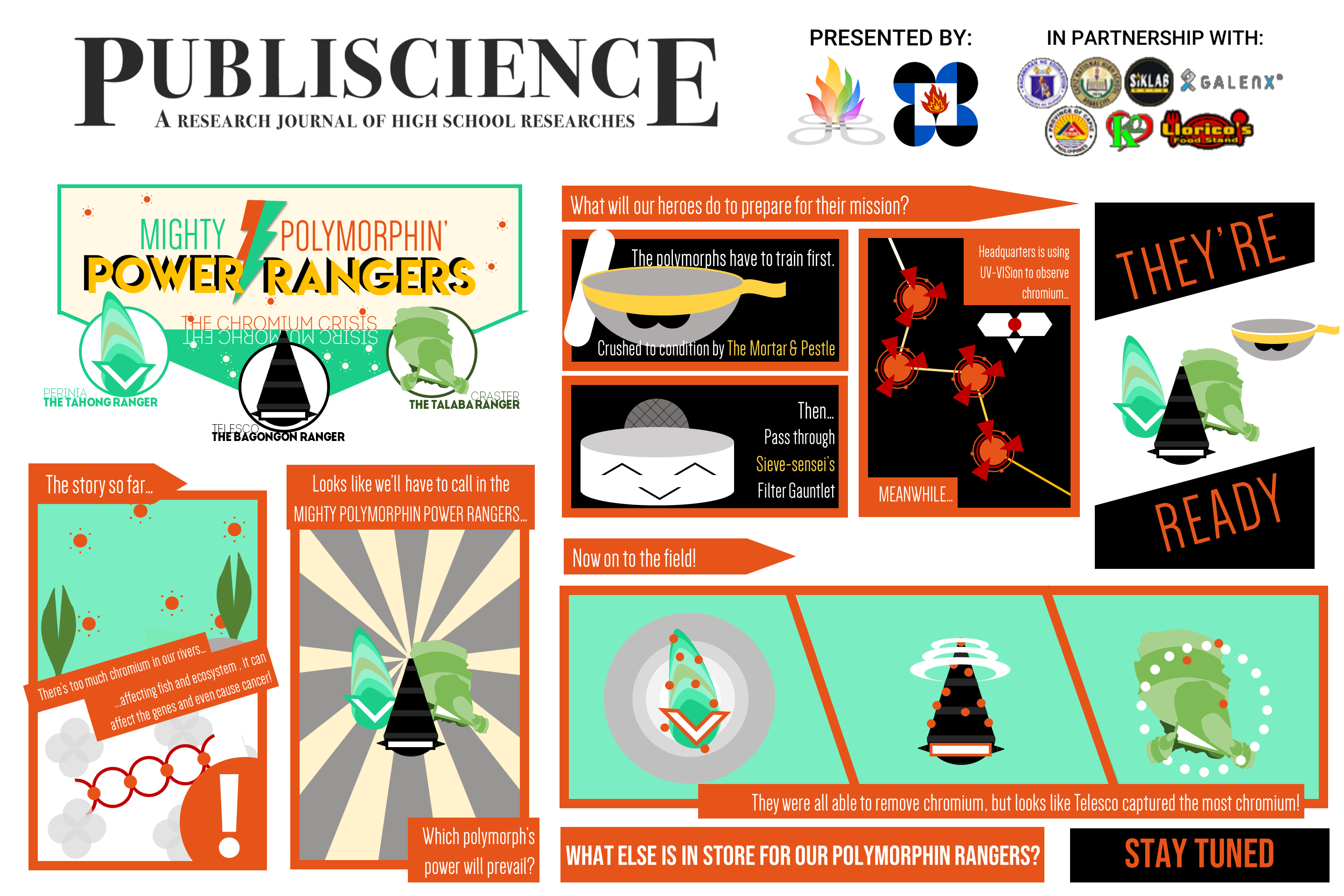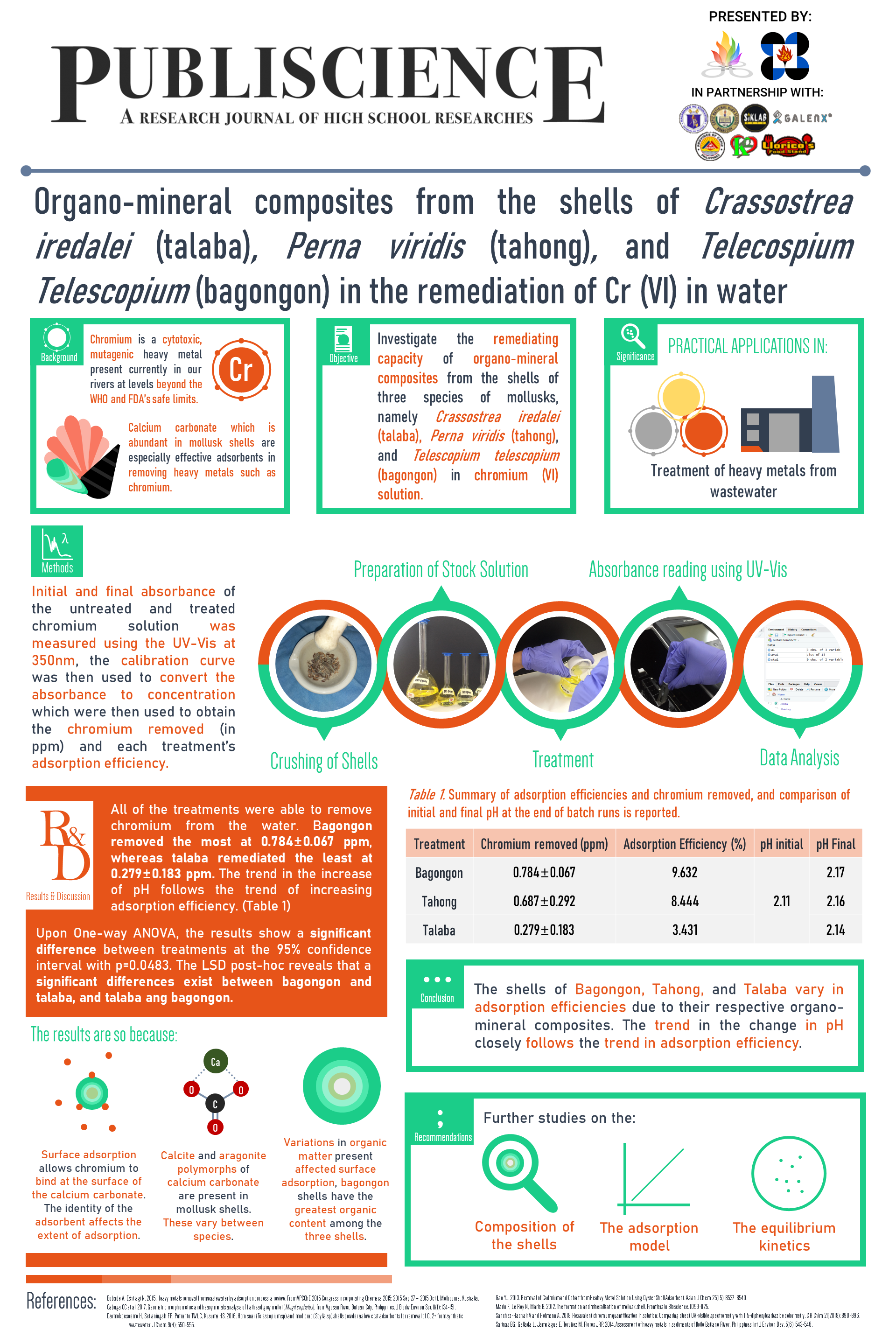Organo-mineral composites from the shells of Crassostrea iredalei (slipper cupped oyster), Perna viridis (green shell), and Telescopium telescopium (horned snail) in the removal of chromium (VI) from water
CHLOE ELLESSE S. FACIOLAN, FRANCIS HARRY SHONE V. LEONORA, LEONARD VINCENT A. MAJADUCON, and RAMON ANGELO N.SINCO
Philippine Science High School – Western Visayas Campus, Brgy. Bito-on, Jaro, Iloilo City 5000, Department of Science and Technology, Philippines
Abstract
This paper presents and compares organo-mineral composites from Crassostrea iredalei (slipper cupped oyster), Perna viridis (green shell), and Telescopium telescopium (horned snail) in the removal of hexavalent chromium from water. Shells were oven-dried, ground, and sieved to fine powder size. Replicates of 10 ppm dichromate solution were individually treated with 1 mg of shell powder for 20 minutes. Following conversion of absorbance to concentration and % Cr6+ removed, T. telescopium was found to be most efficient in Cr6+ remediation with 9.632% removal, followed by P. viridis at 8.444%, and C. iredalei at 3.431%. Chromium removal is attributed to electronegativity differences between the metal and structural organic components of the shell composites, as well as the capacity of CaCO3 to facilitate surface adsorption. Differences in the concentrations of Cr6+ removed result from variances in biomineralization among mollusk species, which dictate the characterization and concentration of CaCO3 in their shell layers.
Keywords: bioremediation, heavy metal removal, chromium (VI), mollusk shells, calcium carbonate


